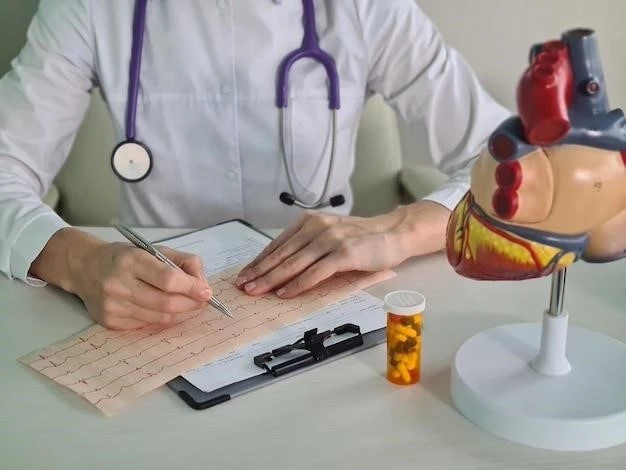Introduction
Polyarteritis nodosa (PAN) is a systemic necrotizing vasculitis that affects medium-sized muscular arteries and sometimes small arteries, causing tissue ischemia and organ damage. It can be idiopathic or associated with various factors. Learn more about this condition and its management.
Polyarteritis nodosa (PAN) is a rare autoimmune disease characterized by systemic inflammation of small and medium-sized arteries, leading to organ damage. It often affects vital organs such as the kidneys, nerves, skin, heart, and gastrointestinal tract. The inflammation causes arterial wall swelling, ultimately resulting in tissue damage and potential organ failure. Understanding the symptoms, diagnosis, and treatment options is crucial for managing this complex vasculitis.
Clinical Presentation
Polyarteritis nodosa (PAN) manifests with symptoms such as fever, fatigue, neuropathy, renal failure, gastrointestinal issues, and skin ulcers. It affects various organs due to arterial inflammation. Understanding these signs is crucial for timely diagnosis and treatment.
Definition of Polyarteritis Nodosa
Polyarteritis nodosa (PAN) is a systemic necrotizing vasculitis characterized by inflammation of small to medium-sized arteries, leading to tissue damage and organ compromise. The disease typically spares pulmonary vessels and presents with diverse clinical manifestations affecting various vital organs.
Causes and Risk Factors
Polyarteritis nodosa (PAN) can be idiopathic or associated with hepatitis B or C infections, certain medications, or lymphomas. Understanding these triggers is essential in managing and preventing the disease effectively.
Association with Hepatitis B and C
Polyarteritis nodosa (PAN) has a well-known association with hepatitis B and C infections, with these viral diseases often triggering or exacerbating the development of the vasculitis. Understanding the link between PAN and viral hepatitis is crucial for effective management and treatment of the condition.
Diagnosis
Diagnosing polyarteritis nodosa (PAN) involves techniques like blood tests, biopsies, and arteriography to confirm arterial inflammation. Early and accurate diagnosis is crucial for initiating appropriate treatment and managing the disease effectively.
Methods for Confirming Polyarteritis Nodosa
Confirmation of polyarteritis nodosa (PAN) involves utilizing diagnostic methods like blood tests to detect inflammatory markers, biopsies of affected tissues, and arteriography to visualize arterial abnormalities. These approaches aid in confirming the presence of arterial inflammation and guiding appropriate treatment decisions.
Pathophysiology
Polyarteritis nodosa (PAN) involves inflammation of medium-sized arteries, resulting in tissue damage and organ dysfunction. The inflammatory process affects arterial walls, leading to compromised blood flow and potential ischemic injury to various organs. Understanding this pathophysiology is crucial for guiding treatment decisions and managing the condition effectively.
Inflammatory Process in Blood Vessels
Polyarteritis nodosa (PAN) involves a complex inflammatory process in blood vessels, leading to arterial wall thickening, tissue damage, aneurysm formation, and potential occlusions. Understanding the cascade of events in vascular inflammation is crucial for managing the disease effectively and preventing complications.
Treatment
Managing polyarteritis nodosa (PAN) involves a combination of corticosteroids and immunosuppressants to reduce inflammation and prevent organ damage. Early treatment and regular follow-ups are essential for controlling the disease and improving outcomes.
Management Strategies for Polyarteritis Nodosa
Managing polyarteritis nodosa (PAN) requires a combination of pharmacological therapies, including corticosteroids and immunosuppressants, to suppress inflammation and preserve organ function. Additionally, close monitoring, lifestyle modifications, and follow-up evaluations are essential components of successful disease management. Collaboration with healthcare providers and adherence to treatment plans are crucial for achieving optimal outcomes in PAN.

Prognosis
Understanding the outlook for individuals with polyarteritis nodosa (PAN) is crucial. Early diagnosis and management can lead to better long-term outcomes. Regular monitoring and adherence to treatment plans can improve prognosis and quality of life for those affected by this condition.
Outlook for Individuals with Polyarteritis Nodosa
The prognosis for individuals with polyarteritis nodosa (PAN) can vary depending on the severity of the disease and response to treatment. With early diagnosis, appropriate management, and regular follow-ups, many individuals can achieve remission and effectively control the condition. It is essential to adhere to treatment plans and lifestyle modifications to improve long-term outcomes and quality of life.

Complications
Polyarteritis nodosa (PAN) can lead to various complications, such as organ damage, peripheral neuropathy, renal failure, gastrointestinal perforation, and skin ulcers. Understanding these potential outcomes is crucial for implementing appropriate treatment and monitoring strategies to prevent long-term issues.
Possible Adverse Effects of Polyarteritis Nodosa
Complications of polyarteritis nodosa (PAN) may include organ damage, peripheral neuropathy, renal failure, intestinal perforation, and skin ulcers. Recognizing and addressing these adverse effects is crucial for comprehensive disease management and improving patient outcomes.
Prevention
While specific prevention strategies for polyarteritis nodosa are unknown, avoiding risk factors like hepatitis B or C infections, toxins, and certain medications may reduce the likelihood of developing this condition. Regular monitoring and prompt treatment of infections can also help prevent complications associated with the disease.
Strategies to Reduce the Risk of Polyarteritis Nodosa
To reduce the risk of polyarteritis nodosa, individuals should focus on avoiding potential triggers like hepatitis B or C infections, toxins, and specific medications associated with the condition. Regular monitoring of viral infections and early intervention can help lower the likelihood of developing this autoimmune disease. Additionally, maintaining a healthy lifestyle and following any prescribed preventive measures can contribute to reducing the risk of polyarteritis nodosa.
